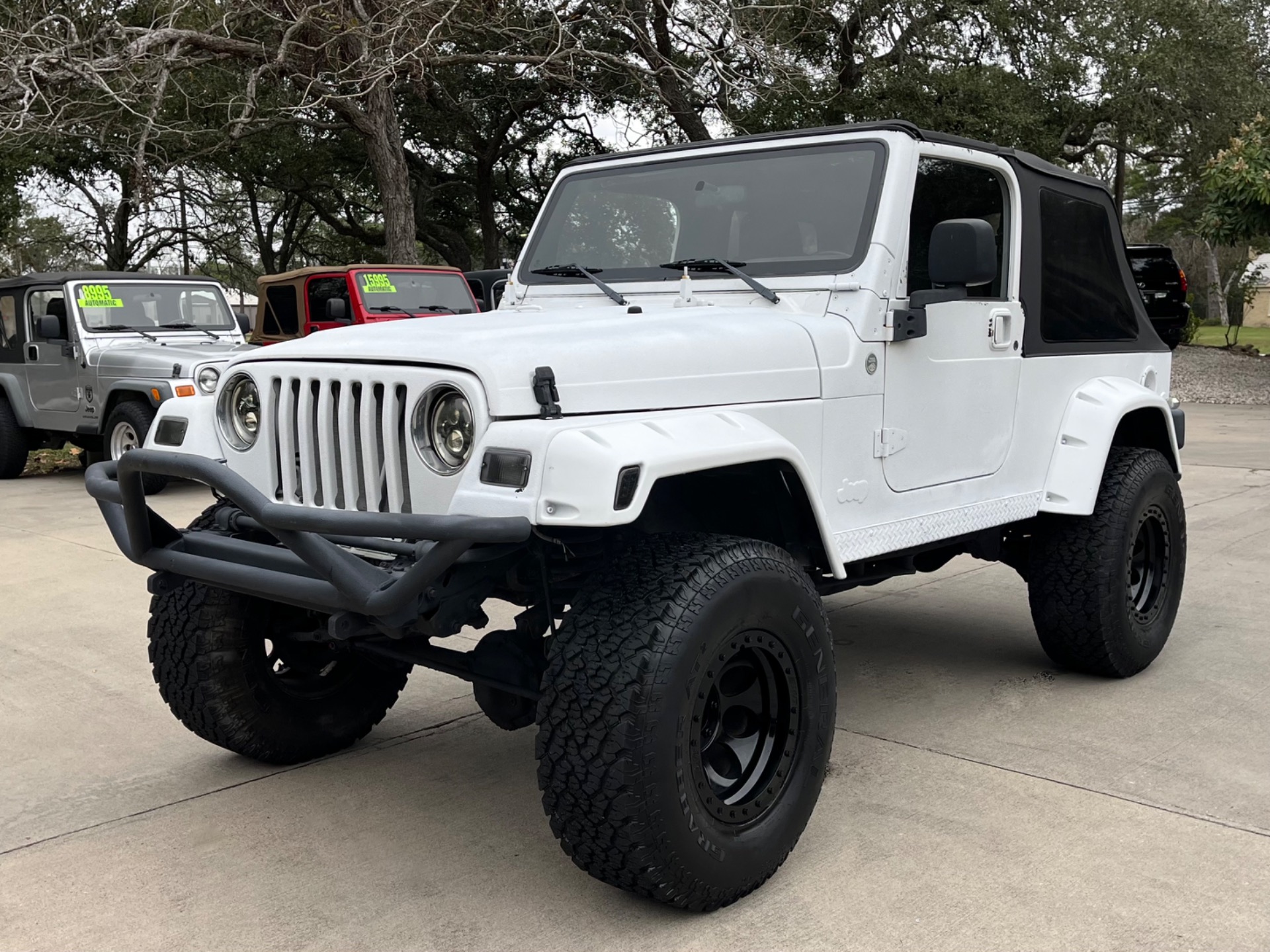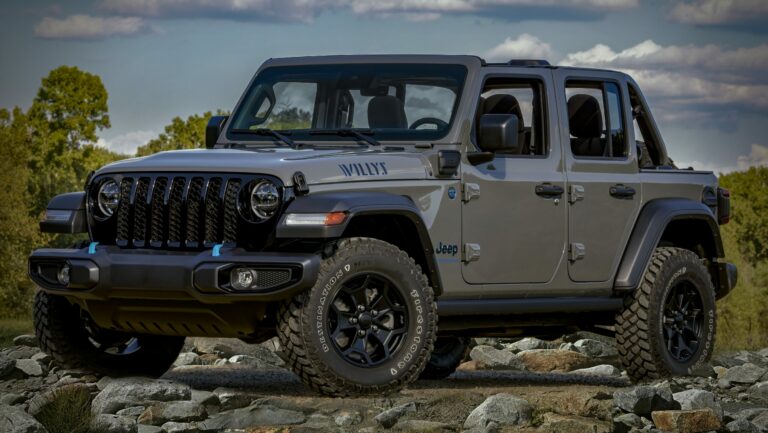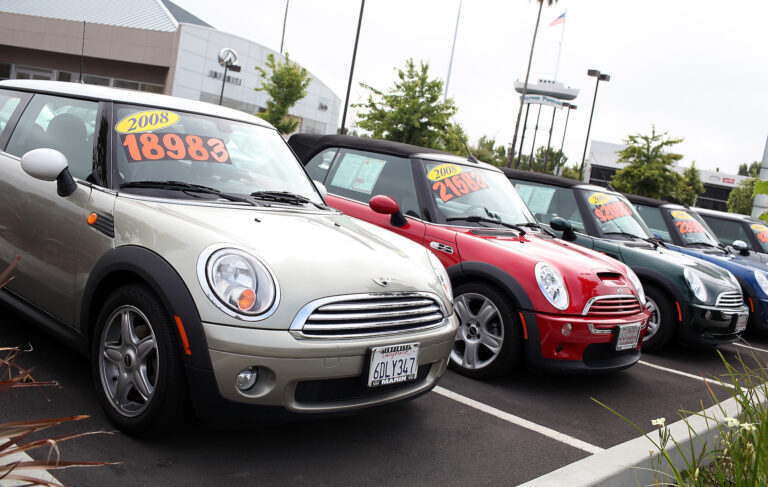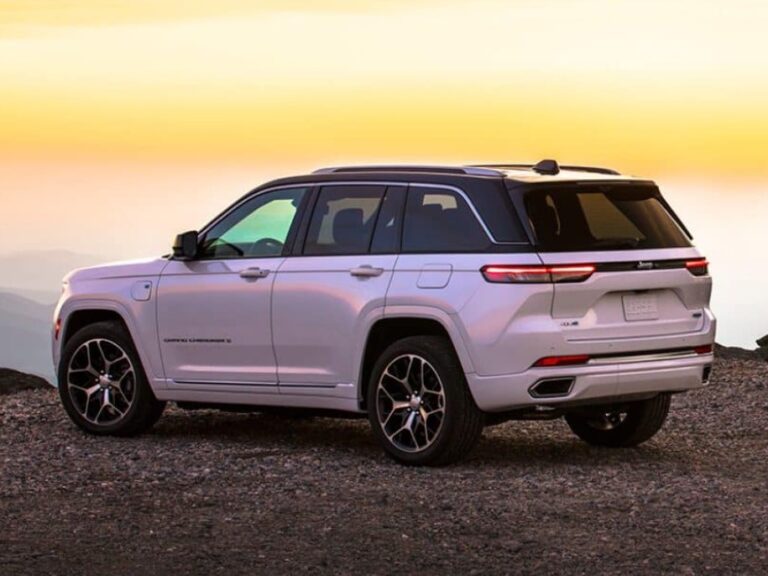Used Jeep Rubicon Axles For Sale: Unlocking Ultimate Off-Road Capability
Used Jeep Rubicon Axles For Sale: Unlocking Ultimate Off-Road Capability /jeeps.truckstrend.com
For dedicated off-road enthusiasts, the Jeep Rubicon stands as an icon of trail-ready performance, largely due to its robust drivetrain components. Among these, the axles are paramount. Equipped with heavy-duty Dana 44 front and rear axles featuring electronic locking differentials and often lower, more aggressive gear ratios, Rubicon axles offer a significant advantage over the standard axles found in other Jeep models. For many, acquiring a full Rubicon trim isn’t feasible, or perhaps they own a non-Rubicon Jeep and seek a substantial performance upgrade. This is where the market for Used Jeep Rubicon Axles For Sale becomes a goldmine, offering a cost-effective pathway to enhanced off-road capability, durability, and the coveted "locker" functionality.
Buying used Rubicon axles allows Jeep owners to transform their Sport, Sahara, or even older TJ/LJ models into formidable rock crawlers and trail conquerors without the hefty price tag of new aftermarket components or a complete vehicle upgrade. This article will serve as a comprehensive guide, exploring the benefits, critical considerations, practical advice, and everything you need to know when navigating the world of used Rubicon axles.
Used Jeep Rubicon Axles For Sale: Unlocking Ultimate Off-Road Capability
Why Choose Used Rubicon Axles? The Strategic Advantage
The allure of used Rubicon axles is multifaceted, offering compelling reasons for their high demand in the off-road community:
- Cost Savings: This is arguably the most significant benefit. New aftermarket Dana 44 axles with lockers and gears can cost thousands of dollars per axle. Used Rubicon take-offs, while still an investment, are significantly more affordable, making a high-performance upgrade accessible to a wider range of budgets.
- Instant Performance Upgrade: Rubicon axles come factory-equipped with electronic Tru-Lok differentials, which provide 100% lock-up for maximum traction in challenging terrain. This feature alone is a game-changer for serious off-roading, eliminating the need for expensive aftermarket locker installations.
- Enhanced Durability: Compared to the Dana 30 front and Dana 35/44 (non-Rubicon) rear axles found in other Jeep models, Rubicon Dana 44s feature stronger axle tubes, larger ring and pinion gears, and often stronger axle shafts, making them more resilient to the stresses of aggressive off-roading and larger tires.
- Optimized Gearing: Rubicon axles typically come with lower gear ratios (e.g., 4.10, sometimes 3.73 in early models) directly from the factory. This gearing is ideal for larger tires and improves low-speed crawling ability, saving you the additional expense and labor of re-gearing your existing axles.
- Proven Reliability: These axles are designed and tested by Jeep for severe off-road use, meaning they’re built to withstand significant abuse. When properly inspected, a used Rubicon axle offers a reliable foundation for your build.
![]()
Key Features and Specifications of Rubicon Axles
Understanding the core characteristics of Rubicon axles is crucial for making an informed purchase:
- Axle Type: Both front and rear are Dana 44s. While a standard Dana 44 is an upgrade over a Dana 30/35, the Rubicon variant is specifically enhanced for off-road performance.
- Electronic Lockers: The defining feature. These are factory-installed electronic Tru-Lok differentials that provide selectable full lock-up. They require specific wiring to function.
- Gear Ratios: Most JK Rubicon axles come with 4.10:1 gears. Some early JK Rubicons and certain JL/JT models might have 3.73:1 or even 4.56:1, depending on the transmission and options. Always verify the ratio.
- Axle Shafts: Generally stronger than non-Rubicon counterparts, though many serious builders still upgrade to aftermarket chromoly shafts for extreme use.
- Width:
- JK Rubicon: Approximately 65.5 inches WMS (Wheel Mounting Surface) to WMS.
- JL/JT Rubicon: Significantly wider at approximately 68.5 inches WMS. This difference is critical for compatibility and tire clearance.

- Bolt Pattern:
- JK Rubicon: 5×5" (5 on 127mm).
- JL/JT Rubicon: 5×5" (5 on 127mm).
- Brakes: Come with larger rotors and calipers compared to non-Rubicon models, offering improved stopping power.
![]()
What to Look For When Buying Used Rubicon Axles: An Inspection Checklist
Thorough inspection is paramount when purchasing used axles. Don’t rely solely on pictures; try to see them in person or request detailed videos.
- Housing Integrity:
- Bends/Dents: Look along the axle tubes. A bent housing is a deal-breaker unless you’re prepared for significant repair or replacement.
- Cracks: Inspect around the differential housing, spring perches, and control arm mounts for any signs of cracks, especially near welds.
- Rust: Surface rust is common and generally fine. Deep, flaking rust that compromises structural integrity is a red flag.
- Differential and Gears:
- Fluid Condition: If possible, check the differential fluid. Milky fluid indicates water intrusion, while excessive metallic flakes suggest severe wear.
- Play: Rotate the pinion yoke back and forth. A small amount of play (backlash) is normal, but excessive play or clunking sounds indicate worn gears or bearings.
- Locker Functionality: If connected, test the locker engagement. Listen for unusual noises. If not connected, confirm the locker is present and appears intact.
- Gear Ratio: Confirm the stamped ratio on the differential or rotate the input shaft while counting wheel rotations.
- Axle Shafts, U-Joints/CVs:
- Straightness: Roll the shafts if removed, or visually inspect for bends.
- Splines: Check the splines at the differential and wheel end for wear or damage.
- U-Joints (JK Front): Check for play, rust, or stiffness.
- CV Joints (JL/JT Front): Check boots for tears and feel for excessive play.
- Brakes:
- Rotors: Check for deep grooves, warping, or excessive wear.
- Calipers: Look for leaks or seized pistons.
- Pads: Will likely need replacement, but check for uneven wear.
- Ball Joints (Front Axle):
- Grab the top and bottom of the wheel/hub and try to rock it. Any play indicates worn ball joints, which are common wear items but add to the overall cost.
- Unit Bearings/Wheel Hubs:
- Check for play or rough spinning.
- Mounting Brackets:
- Ensure spring perches, control arm mounts, and track bar mounts are intact, not bent, or severely rusted.
- Electronic Components:
- Locker Wiring: Inspect the wiring harness for cuts, fraying, or damage.
- ABS Sensors: Ensure they are present and appear undamaged.
Installation Considerations and Compatibility
Swapping Rubicon axles isn’t always a direct bolt-on, especially when crossing Jeep generations.
- Donor Vehicle to Recipient Vehicle (Same Generation): Swapping JK Rubicon axles into a JK Sport/Sahara is the most straightforward. The bolt patterns, widths, and mounting points are generally compatible. However, wiring the lockers will require an aftermarket harness (e.g., from an AEV ProCal Module, wiring from a donor Rubicon, or a dedicated harness kit). ABS and speed sensors should plug in.
- JL/JT Rubicon Axles into JK: This is a popular but more complex swap. JL/JT axles are significantly wider, which means they will push your wheels out further. While the bolt pattern is the same (5×5"), the control arm mounts, track bar mounts, and shock mounts are different. This swap often requires cutting off and re-welding all mounting brackets, along with custom driveshafts and significant electronic integration (ABS, speed sensors, and locker wiring). It’s a job for experienced fabricators.
- Rubicon Axles into TJ/LJ: This is a major undertaking, requiring custom fabrication of all mounting points, driveshafts, and potentially steering components. While possible, it’s not a simple bolt-in.
- Driveshafts: The length of your driveshafts may need to change, especially with different pinion angles or if you’re swapping between generations. You might also need different yokes.
- Steering: Ensure your existing steering components (tie rod, drag link) are compatible or upgrade them as part of the swap.
- Brake Lines: May need to be extended or replaced.
Where to Find Used Rubicon Axles
Several avenues exist for finding used Rubicon axles:
- Online Jeep Forums: Dedicated Jeep and off-road forums (e.g., JK-Forum, JLWranglerForums, etc.) often have "For Sale" sections where members list take-off parts.
- Social Media Marketplaces: Facebook Marketplace and specific Jeep/off-road buy/sell groups are excellent resources. Search locally and be prepared to travel.
- Specialized Salvage Yards: Yards that specialize in Jeeps or off-road vehicles are prime spots. They often acquire wrecked Rubicons and part them out.
- Off-Road Shops: Many shops perform axle swaps for customers upgrading to even stronger aftermarket options. They might have used Rubicon axles from these take-offs.
- eBay/Craigslist: Good for wider searches, but be extra cautious with long-distance purchases and verify the seller’s reputation.
Pricing Guide for Used Jeep Rubicon Axles
Prices for used Rubicon axles can vary widely based on condition, generation (JK vs. JL/JT), gear ratio, and whether they come complete (with brakes, shafts, etc.) or as bare housings.
| Axle Type | Jeep Generation | Condition | Estimated Price Range (USD) | Key Inclusions |
|---|---|---|---|---|
| Front Axle | JK (Dana 44) | Good Used (complete) | $1,800 – $2,800 | Locker, 4.10 gears, shafts, knuckles, brakes |
| Front Axle | JK (Dana 44) | Fair Used (minor TLC) | $1,200 – $1,800 | Locker, gears, may need ball joints/unit bearings |
| Front Axle | JK (Dana 44) | Needs Rebuild | $800 – $1,200 | Housing, locker, gears (needs bearings/seals) |
| Rear Axle | JK (Dana 44) | Good Used (complete) | $1,500 – $2,500 | Locker, 4.10 gears, shafts, brakes |
| Rear Axle | JK (Dana 44) | Fair Used (minor TLC) | $1,000 – $1,500 | Locker, gears, may need bearings/seals |
| Rear Axle | JK (Dana 44) | Needs Rebuild | $700 – $1,000 | Housing, locker, gears (needs bearings/seals) |
| Front Axle | JL/JT (Dana 44) | Good Used (complete) | $2,500 – $4,000+ | Locker, gears (often 4.10/4.56), shafts, knuckles, brakes |
| Rear Axle | JL/JT (Dana 44) | Good Used (complete) | $2,000 – $3,500+ | Locker, gears (often 4.10/4.56), shafts, brakes |
| Pair (F&R) | JK | Good Used (complete) | $3,000 – $5,000+ | Both axles, complete, ready for install |
| Pair (F&R) | JL/JT | Good Used (complete) | $4,500 – $7,000+ | Both axles, complete, ready for install |
Note: These are estimated ranges and can fluctuate based on market demand, location, specific condition, and seller. Always negotiate.
Tips for a Successful Purchase
- Do Your Research: Understand the specific Rubicon axle you need (JK vs. JL/JT) and its compatibility with your Jeep.
- Ask for Detailed Photos/Videos: Don’t hesitate to request multiple angles, close-ups of specific areas (like welds or seals), and even videos of the seller rotating the axle or demonstrating the locker.
- Communicate Clearly: Ask specific questions about the axle’s history, mileage, and any known issues.
- Negotiate Respectfully: Be prepared to negotiate, but be fair. Remember, shipping large, heavy items like axles can be expensive.
- Consider Shipping Costs: Axles are heavy and bulky. Get shipping quotes before committing to a purchase if buying from a distance. Freight shipping is often required.
- Professional Inspection: If possible, have a qualified mechanic or off-road shop inspect the axles before purchase, especially for higher-priced units.
Potential Challenges and Solutions
- Damaged Components: Even "good" used axles might have worn ball joints, unit bearings, or brake components. Factor in the cost of these common wear items into your budget.
- Electronic Issues: Wiring the factory lockers can be tricky. Solutions include aftermarket wiring harnesses designed for swaps, or consulting with an experienced off-road electrician.
- Compatibility Headaches: As discussed, cross-generation swaps (e.g., JL axles on a JK) require significant fabrication. Ensure you have the skills, tools, or budget for professional installation.
- Seller Misrepresentation: Unfortunately, not all sellers are honest. Always be cautious, ask for proof (like VIN from the donor vehicle), and use payment methods that offer some buyer protection if possible.
- Rust and Corrosion: While surface rust is common, excessive rust can indicate deeper problems or require significant cleanup.
Conclusion
Investing in Used Jeep Rubicon Axles For Sale is a highly effective and often more affordable way to dramatically upgrade your Jeep’s off-road prowess. The combination of stronger Dana 44 housings, integrated electronic lockers, and optimized gearing provides a robust foundation for tackling tougher trails and running larger tires with confidence. By diligently researching, thoroughly inspecting, and understanding the installation requirements, you can successfully acquire these sought-after components and transform your Jeep into the off-road beast it was always meant to be. This strategic upgrade represents not just an improvement in parts, but a significant leap in your vehicle’s capability and your confidence behind the wheel on the most challenging terrain.
Frequently Asked Questions (FAQ) About Used Jeep Rubicon Axles
Q1: Are Rubicon axles a direct bolt-on for non-Rubicon Jeeps (e.g., Sport/Sahara)?
A1: For Jeeps within the same generation (e.g., JK Rubicon axles into a JK Sport/Sahara), they are largely a direct bolt-on for the mechanical components (control arm mounts, spring perches). However, you will need to address the electronic wiring for the lockers and potentially ABS sensors, which is not plug-and-play. Swapping between generations (e.g., JL axles into a JK) is NOT a direct bolt-on and requires significant fabrication.
Q2: What’s the main difference between JK and JL Rubicon axles?
A2: The primary differences are width (JL axles are approximately 3 inches wider), and mounting points (control arm, track bar, shock mounts are different). JL axles also use CV joints instead of U-joints on the front axle shafts, and their brake components and ABS/speed sensor wiring differ.
Q3: Do I need new driveshafts if I swap Rubicon axles into my non-Rubicon Jeep?
A3: It depends on your current setup and lift. While not always strictly necessary for a mild lift, it’s highly recommended to check your driveshaft angles and lengths after the swap. You may need custom-length driveshafts or different yokes to accommodate the new axles, especially if you also increase lift height.
Q4: How do I wire the electronic lockers from a used Rubicon axle?
A4: Wiring the factory electronic lockers typically requires an aftermarket wiring harness kit (e.g., from companies like AEV, Off-Road Only, or similar). These kits provide the necessary switches, relays, and wiring to integrate the lockers independently. Alternatively, some advanced users might try to source and integrate the factory Rubicon wiring and switches, but this is much more complex.
Q5: What gear ratio typically comes with used Rubicon axles?
A5: Most JK Rubicon axles come with 4.10:1 gear ratios. Some earlier JK Rubicons (especially with automatic transmissions) might have 3.73:1. JL/JT Rubicons can come with 3.73:1, 4.10:1, or even 4.56:1, depending on the specific package (e.g., 392 or Gladiator Mojave). Always verify the ratio before purchasing.
Q6: Is it worth buying a used axle that needs a rebuild?
A6: It can be, but you must accurately factor in the cost of parts (bearings, seals, potentially gears or locker parts) and labor (if you’re not doing it yourself). A "needs rebuild" axle is cheaper upfront but can quickly exceed the cost of a "good used" axle if significant components are damaged. It’s often only worthwhile if the housing itself is in excellent condition and you have the skills or a very good deal on labor.
![]()




